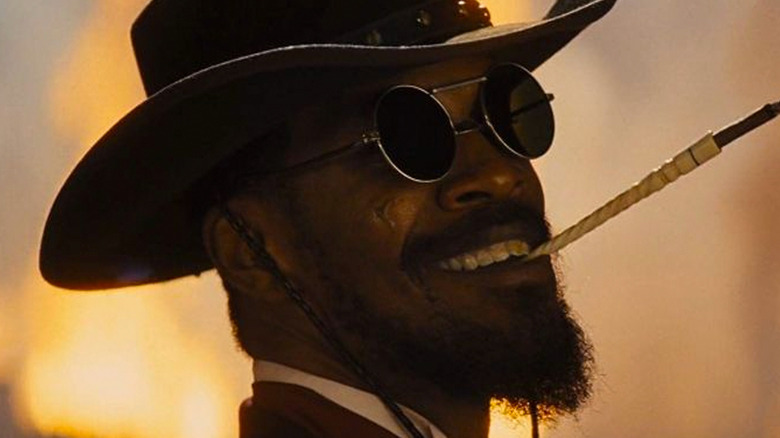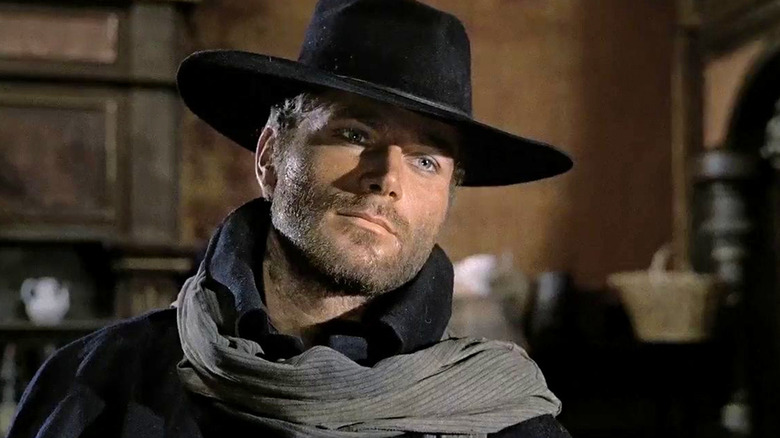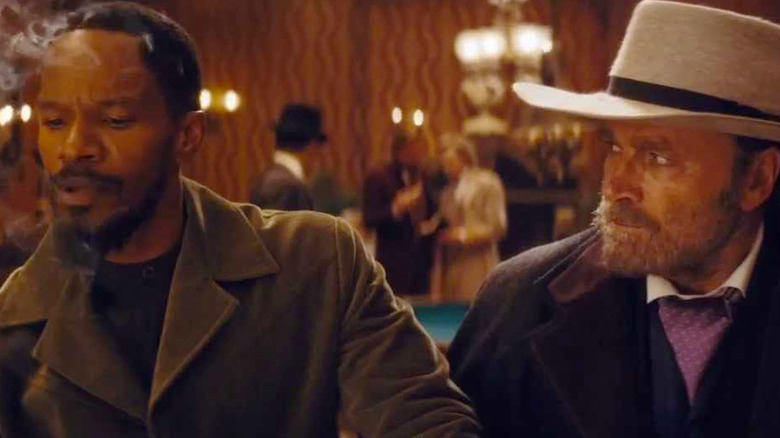This Cut Plotline Would've Completely Changed Django Unchained
Quentin Tarantino's filmography has always been jam-packed with homages and references to some of his favorite films. The director is a massive fan of the spaghetti western — essentially the American western remixed by Italian directors in the '60s — and uses the classic themes of the genre in most of his work. True to form, "Django Unchained” is a refreshing remix of the well-worn genre. For some, the western has been done to death, but Tarantino breathed new life into the film staple by transplanting it to the Antebellum South and focusing on the titular Django (Jamie Foxx), a freed slave who teams up with an altruistic bounty hunter (Christoph Waltz) to rescue his wife from an off-kilter slave owner.
Though Tarantino took some of the most beloved elements of the western and flipped them on their head in "Django Unchained," the director was arguably the most inspired by the original Django, played by Franco Nero in the 1966 classic of the same name. In fact, Nero nearly inspired a crucial dynamic in "Django Unchained" — one that might have changed the trajectory of the film.
The Django That Started It All
Over the years, Quentin Tarantino has been consistently outspoken about his love of the spaghetti western. The director is especially passionate about Italian auteur Sergio Corbucci, who directed Franco Nero in his breakthrough role in "Django." The film was inspired by Akira Kurosawa's "Yojimbo" (like several other westerns of the era), but it was "Django" that helped cement the spaghetti western in a category all its own, alongside other classics like "A Fistful of Dollars." The film spawned dozens of unofficial sequels and adaptations, and created countless iterations of Nero's classic character.
Tarantino first saw "Django" at the age of 14, and from that point on seemed determined to one day meet, and eventually work with, Franco Nero. The pair met for the first time in 2009, and Tarantino flattered Nero with his extensive knowledge of the actor's work. "He knew practically all my work," Nero told The Hollywood Reporter. "He recited lines from my movies, and the music from my movies. He knew almost all of them."
It wasn't until 2011, however, that the two would have an opportunity to collaborate. That year, Tarantino was gearing up to direct "Django Unchained," the latest movie to use the Django name. He called Nero up to pitch his ideas for the film — and the actor in turn had his own concept for a potential cameo.
Nero's Plans for Django Unchained
Nero detailed a bit of his idea to THR in 2013. "My idea is that Jamie Foxx, through the movie, had a vision of a horseman dressed in black ... It haunted him." The identity of the horseman wouldn't be revealed until the end of the film. Nero suggested that he play the father of Foxx's Django, and would deliver a crucial bit of wisdom to his son, "like 'Fight for freedom,' or something like that," via flashback.
However, Tarantino already had another role in mind for Nero. The actor appears during one of the quieter moments in "Django Unchained," in a cameo that honors the film that inspired devout western fans like Tarantino. Nero's character asks Django for his name, and as he answers, adding: "The D is silent."
Nero, without missing a beat, responds with an effortless "I know." Foxx's well-known line leaves a lasting impression, but it's Nero's response that makes it all the more gratifying for fans who know Django's history.
Nero agrees that two Djangos in one film might have made for a very different outcome. "I became friends with Jamie Foxx in real life, but I'm not sure the Djangos would have gotten along," he said. But Tarantino cut and trimmed a considerable amount of the film to get it down to its nearly three-hour runtime. For all we know, there's a chance that another interaction between the Djangos might appear in the film's anticipated extended cut.


